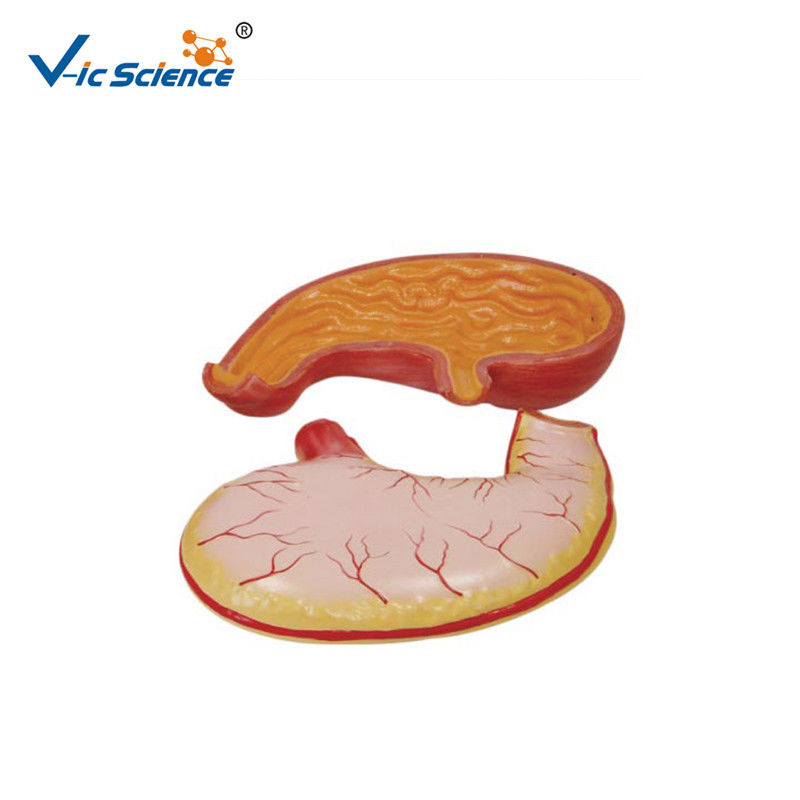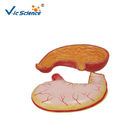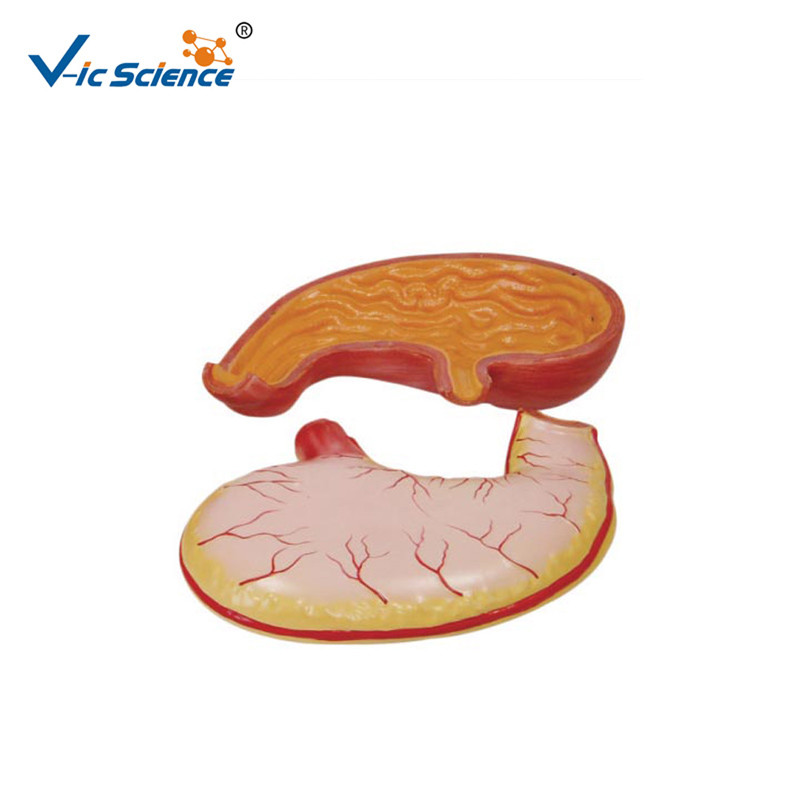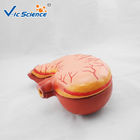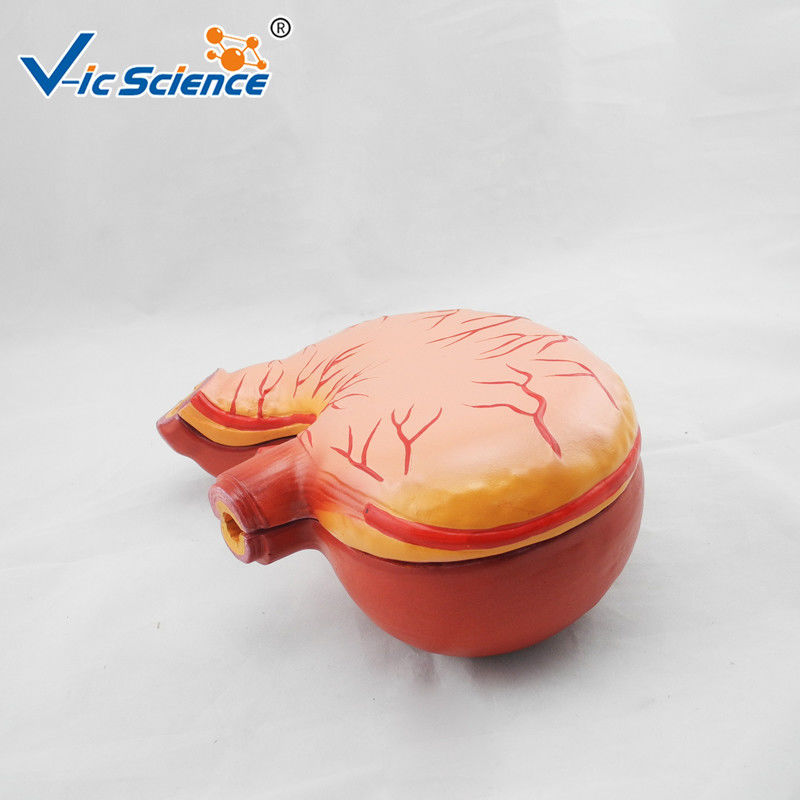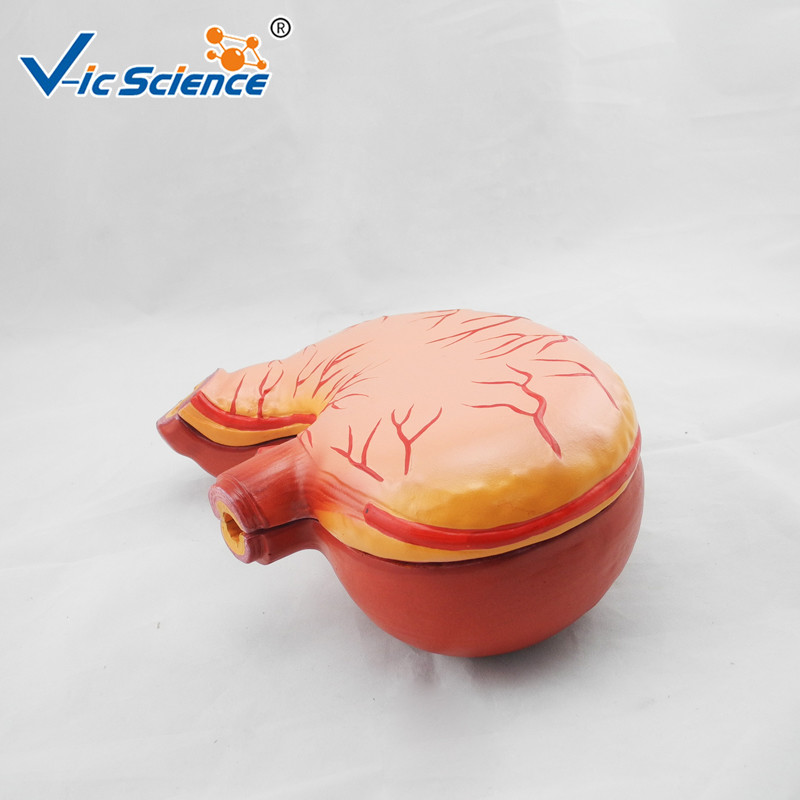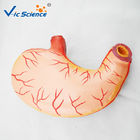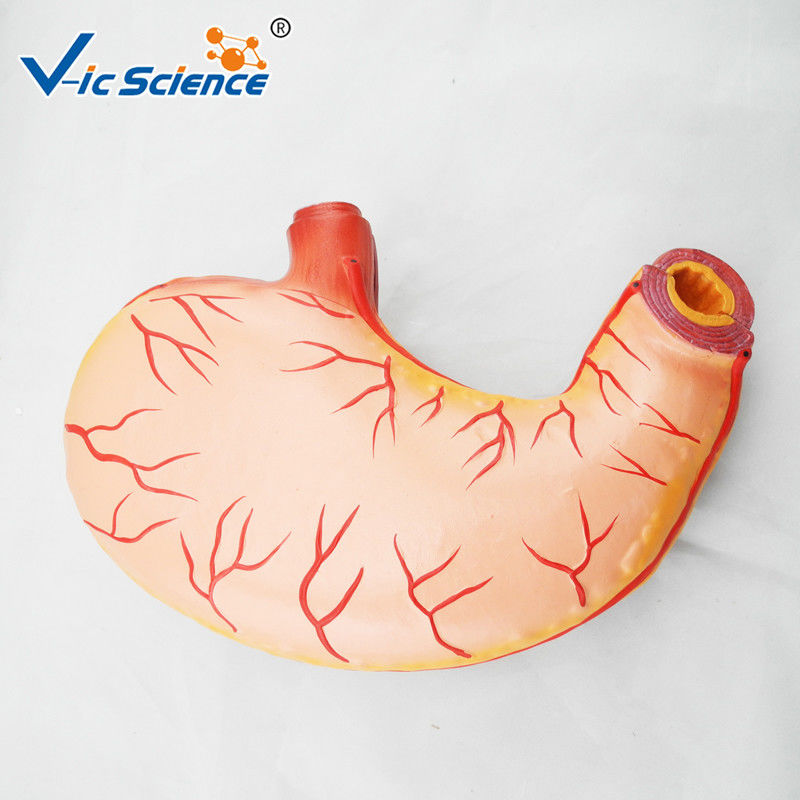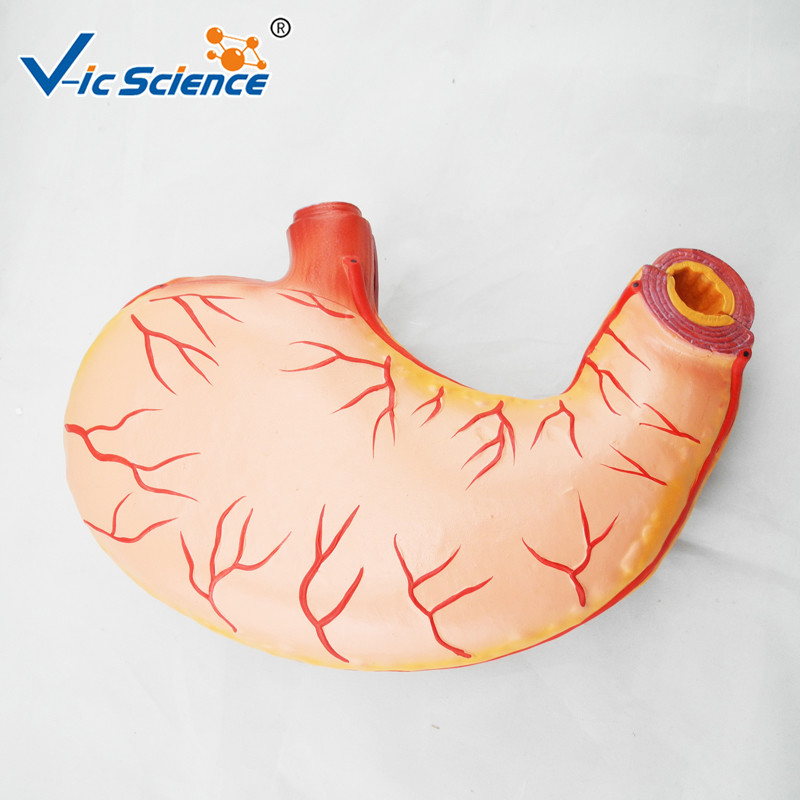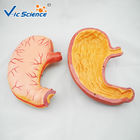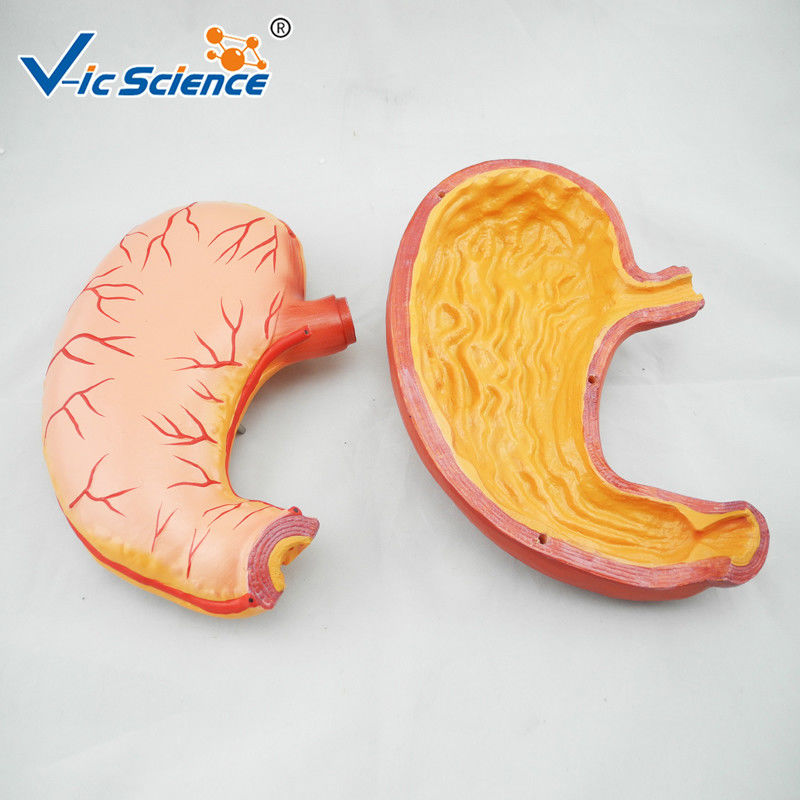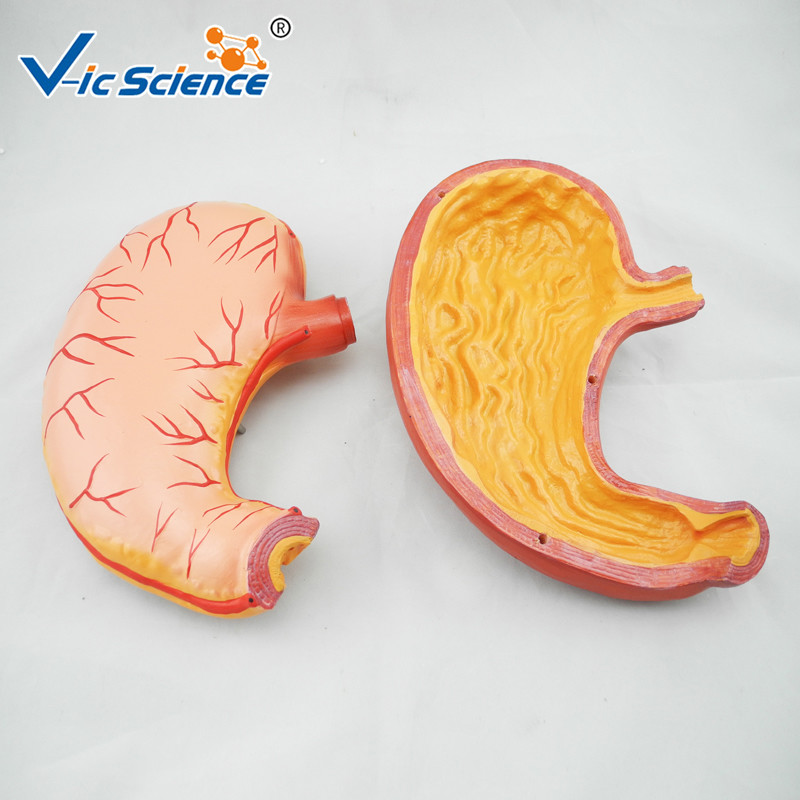Human Stomach Model Medical Science Human Anatomy Model For Study
| Product Name |
Stomach Model |
| Product No |
VIC-306 |
| Material |
PVC |
| Size |
Natural size |
| Application |
For school,laboratory and teacher |
| Packing |
10pcs/carton, 51x37x34cm, 13kgs
|
| Details |
With the longitudinal section, the model shows the structures of the gastric folds, pyloric valve, pyloric sphincter muscles, gastric mucosa and the transitional mucosa of the gastric-esophagus. Made of hard plastic and magnified 2 times of the natural size. |

About the stomach knowledge

The stomach is a muscular, hollow organ in the gastrointestinal tract of humans and many other animals, including several invertebrates. The stomach has a dilated structure and functions as a vital digestive organ. In the digestive system the stomach is involved in the second phase of digestion, following chewing. It performs a chemical breakdown due to enzymes and hydrochloric acid.
In humans and many other animals, the stomach is located between the oesophagus and the small intestine. It secretes digestive enzymes and gastric acid to aid in food digestion. The pyloric sphincter controls the passage of partially digested food (chyme) from the stomach into the duodenum where peristalsis takes over to move this through the rest of the intestines.
Structure
In humans, the stomach lies between the oesophagus and the duodenum (the first part of the small intestine). It is in the left upper part of the abdominal cavity. The top of the stomach lies against the diaphragm. Lying behind the stomach is the pancreas. A large double fold of visceral peritoneum called the greater omentum hangs down from the greater curvature of the stomach. Two sphincters keep the contents of the stomach contained; the lower oesophageal sphincter (found in the cardiac region), at the junction of the oesophagus and stomach, and the pyloric sphincter at the junction of the stomach with the duodenum.
The stomach is surrounded by parasympathetic (stimulant) and sympathetic (inhibitor) plexuses (networks of blood vessels and nerves in the anterior gastric, posterior, superior and inferior, celiac and myenteric), which regulate both the secretory activity of the stomach and the motor (motion) activity of its muscles.
Because it is a distensible organ, it normally expands to hold about one litre of food. The stomach of a newborn human baby will only be able to retain about 30 millilitres. The maximum stomach volume in adults is between 2 and 4 litres.

Sections
In classical anatomy the human stomach is divided into four sections, beginning at the cardia.
The cardia is where the contents of the esophagus empty into the stomach.
The fundus (from Latin, meaning 'bottom') is formed in the upper curved part.
The body is the main, central region of the stomach.
The pylorus (from Greek, meaning 'gatekeeper') is the lower section of the stomach that empties contents into the duodenum.
The cardia is defined as the region following the "z-line" of the gastroesophageal junction, the point at which the epithelium changes from stratified squamous to columnar. Near the cardia is the lower oesophageal sphincter. Recent research has shown that the cardia is not an anatomically distinct region of the stomach but a region of the oesophageal lining damaged by reflux.
 Your message must be between 20-3,000 characters!
Your message must be between 20-3,000 characters! Please check your E-mail!
Please check your E-mail!  Your message must be between 20-3,000 characters!
Your message must be between 20-3,000 characters! Please check your E-mail!
Please check your E-mail!
